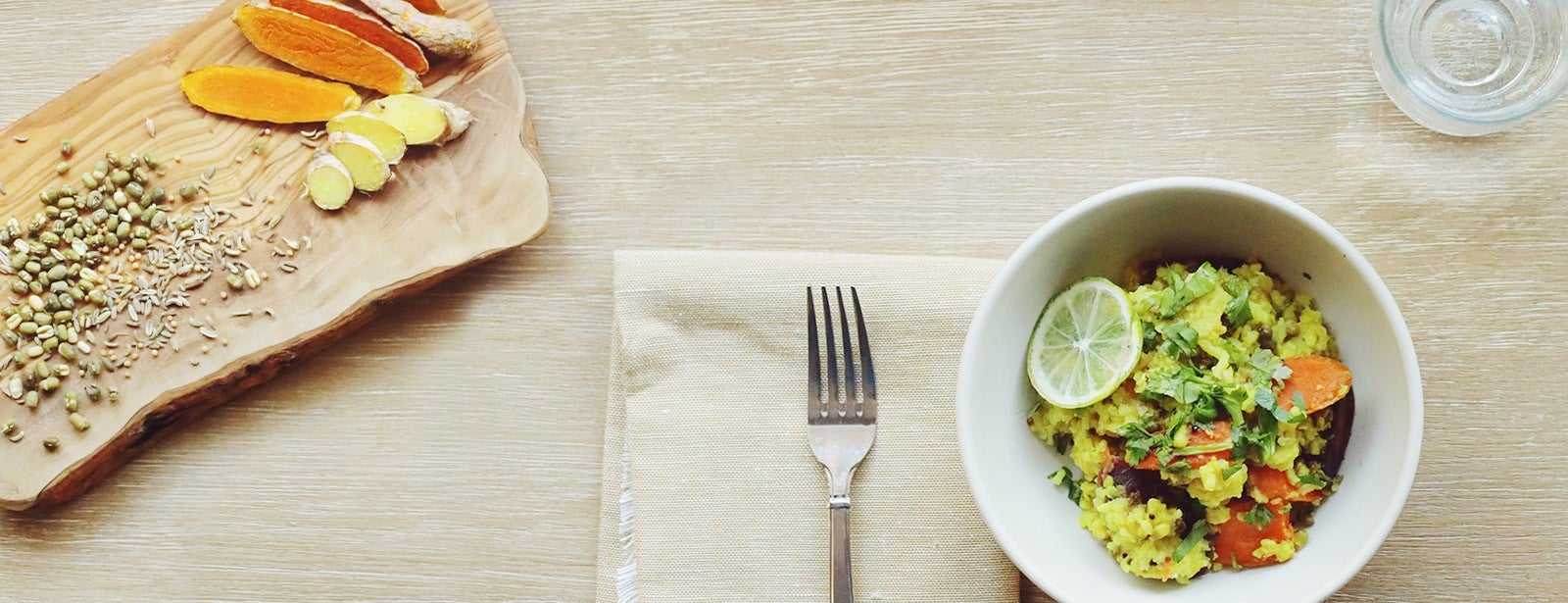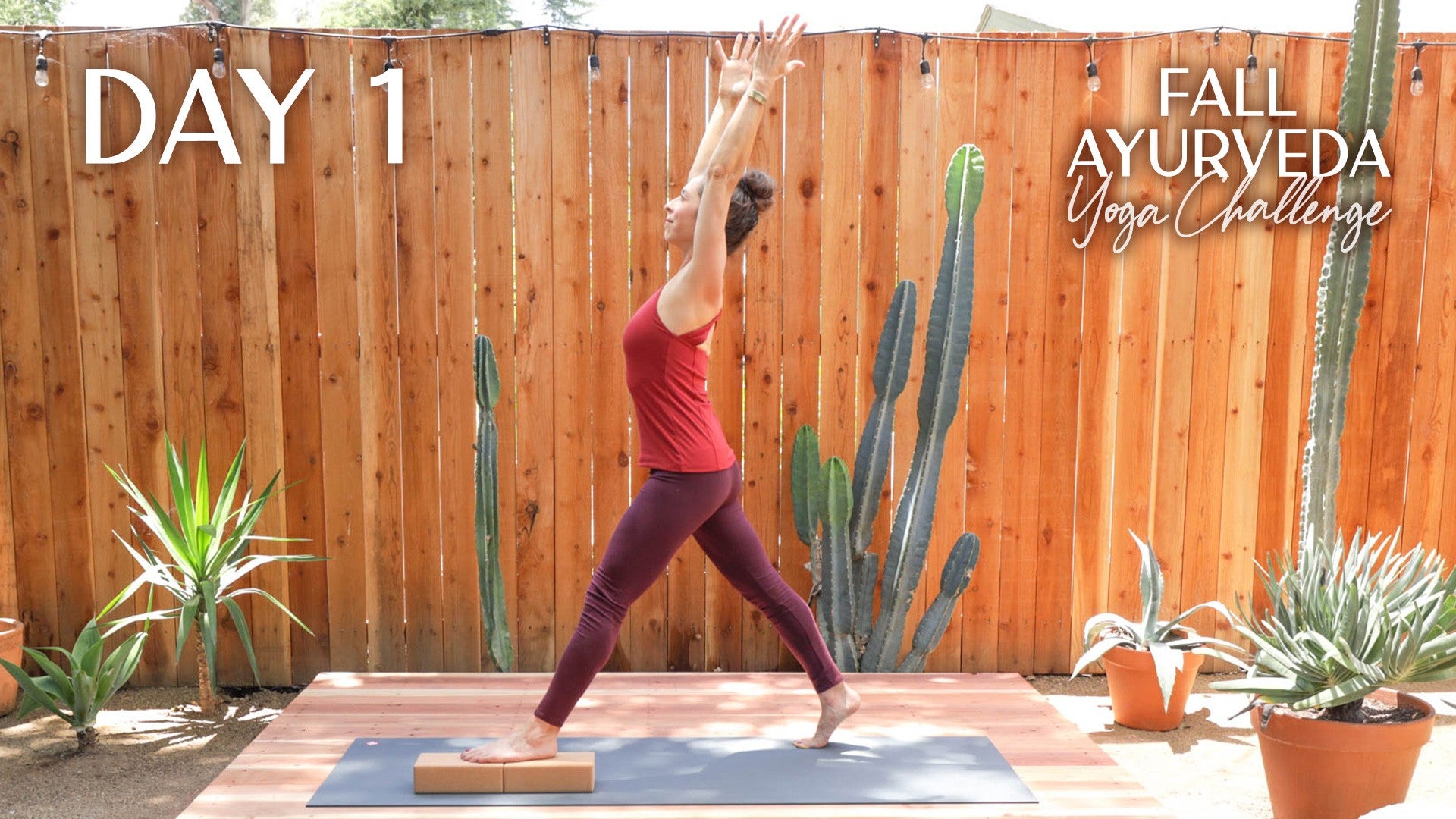
Seasonal Ayurvedic Wellness: Fall Edition
At this seasonal junction, the wisdom of Ayurveda encourages us to seek balance in our lives. One way we can do this is by developing healthy boundaries that create space for self-care routines, fostering a sense of calm and stability as we shift from one season to the next.
Here are some tips on how to stay healthy with yoga and Ayurveda as we transition into autumn.
Sleep
For starters, commit to an early bedtime. If you were living without electricity, you would probably be heading to bed by 8pm or 9pm because it’s dark outside and not easy to be productive when you can’t see anything! I recommend going to bed by 10pm and getting 7–8 hours of consistent sleep. Sleep is one of the top priorities for fall, as it is such an essential part of any healthy immune system. See how yoga can help you get a good night's sleep and try practicing Yoga Nidra.
Diet
From an Ayurvedic perspective, seasonal transitions are a great time to consider doing a mono diet of the Ayurvedic dish kitchari for a few days. It helps to create space to cleanse your mind, simplify your diet, and eliminate any excess inflammation from the summer diet. See my kitchari recipe below to try this delicious and balancing dish.
Setting Boundaries
At this time of year, consider saying “no” more often when invited to stay out late, eat cold foods, have a second alcoholic drink, take on more responsibilities, or any other time when your intuitive reaction (felt in the belly brain) feels tight or uncertain. With the possibility now of more space in your life by saying no, more energy and creativity can be focused toward self-care.
Self-Care Daily Routines
The following nurturing lifestyle choices may help keep you grounded this season:
- Stick to a daily routine with bedtime, meditation, yoga, meals, and downtime.
- Eat soup often. This dish is warm, hydrating, and easy to digest.
- A few times a week, perform abhyanga, a full-body self-massage with warm oil, to nourish and protect the skin.
- Moderate, consistent exercise regulates the Vata Ayurvedic dosha's mobile nature. If you're feeling overstimulated or fatigued, try a Vata balancing practice or move through restorative poses to encourage deep relaxation.
- When outdoors, wear a scarf or hat for additional protection from the wind.
- Lastly, curb the tendency to talk unnecessarily, settling into rejuvenating silence whenever you can.
Join Melina in her 5-Day Fall Ayurveda Yoga Challenge.
Kitchari Recipe
Kitchari (pronounced kich-uh-ree) is a traditional one-pot Ayurvedic dish full of protein that is great for all doshas. It is easy to digest, revitalizing, and detoxifying.
Serves 6 bowls.
Ingredients:- 1 cup of yellow or green mung beans. (Note that green beans must be soaked overnight. I love to soak the beans in broth for extra tastiness.)
- 1 cup of uncooked basmati rice or quinoa
- 2 tablespoon of ghee or coconut oil
- 4 cups of broth
- 1 bay leaf
- 1 tablespoon of fennel
- 1 tablespoon of mustard seeds
- 1 teaspoon of chopped fresh ginger
- 1 teaspoon each of sea salt, turmeric, cumin, and coriander powder
- Half of a lime
- Rinse the beans and rice (or quinoa) in a strainer until the water is clear.
- In a large cooking pot, heat ghee or coconut oil at a medium temperature.
- Once ghee or oil begins to melt, add the bay leaf, fennel, mustard seeds, ginger, cumin, and coriander powder. Stir together for about 1 minute.
- Add the rinsed beans and grain and mix well.
- Add broth to the pot, cover, and bring to a boil. Once boiling, lower heat to a simmer for 15–20 minutes.
- Remove from heat and serve with one or two cooked seasonal vegetables.
- Squeeze lime over kitchari just before serving.
Adjust seasoning to your preference by adding more salt, pepper, lime, ghee, or condiments such as chutney, kimchi, or sauerkraut. Enjoy!
Comments
You need to be a subscriber to post a comment.
Please Log In or Create an Account to start your free trial.



























